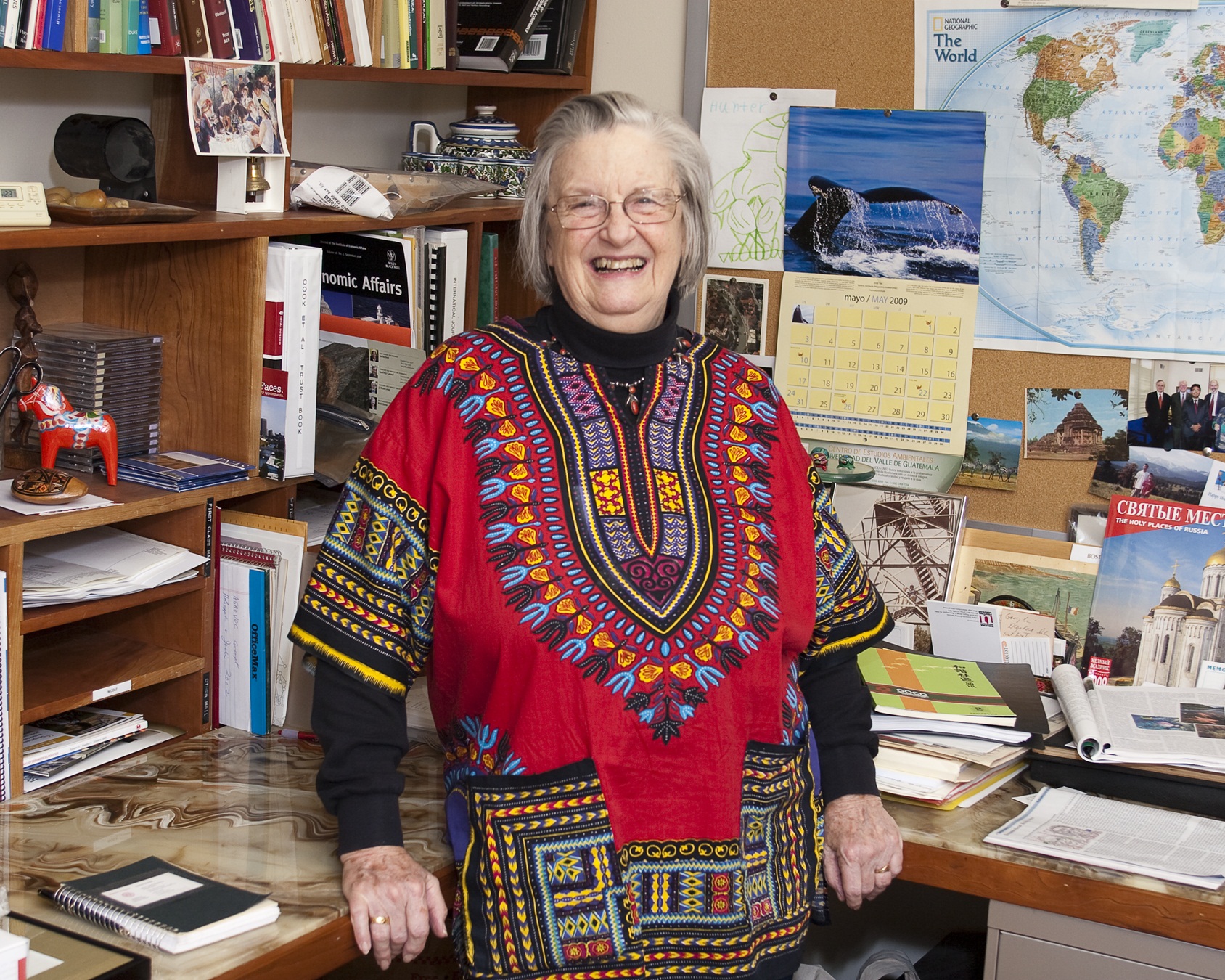My social science career: Interview with Elinor Ostrom

Elinor Ostrom
As part of a series of occasional interviews with leading social scientists, Elinor Ostrom spoke to socialsciencespace. In 2009, she became the first woman to be awarded the Nobel Memorial Prize in Economic Sciences, which she shared with Oliver E. Williamson. She is currently the Arthur F. Bentley Professor of Political Science, and Senior Research Director of the Workshop in Political Theory and Policy Analysis at Indiana University Bloomington, and the Founding Director of the Center for the Study of Institutional Diversity at Arizona State University.
Looking back, what time would you class as having been particularly stimulating or influential?
I think if we were to take a curve, the line would be slower and surer up until the 90s and then a little acceleration since the early 90s. We’ve been getting a lot more work done that is going to be the foundation for the future. Partly we went from just printed materials (which has of course been important) to greater access through the web, to regularly communicating with colleagues from overseas. Email is a curse but it’s also a blessing; all of us are trying to figure out our own personal ways of coping, but it’s enabling people to cross multiple spaces more effectively. I have meetings on Skype, and we’re able to bridge disciplines and locations in a way that we were just not able to do earlier.
What developments in your field do you think have been most important?
The bridging between political science and economics and now the work in new institutional economics are important developments. While it’s called economics, it’s reached out to political scientists, sociologists and others. We are slowly but surely developing methods to cross the ecological and social systems. Interdisciplinarity is important; we can’t have these little tiny silos that don’t address important issues because “they’re not my discipline”. You can try to cross the disciplinary divide but then not understand each other, it is important to start with the beginnings of a common language, which we’ve been working on a framework for creating.
Tell me about some of the key people and publications that have influenced you over the years
Herbert Simon and Douglass North have both been very influential on my work: Herbert Simon for his work on rational behavior, including his ‘The Sciences of the Artificial’ [MIT Press, 1972], and an article in the 1950s on a behavioral model of rational choice and bounded rationality; and Douglass North with his various books on institutional arrangements.
Vincent Ostrom has also been influential; I wouldn’t have gotten the Nobel Prize but for his influence on me over the years. We were both very much involved in the early public choice movement. Related to the early developments of public choice would be James Buchanan,Gordon Tullock, James Coleman and William Riker. The issue early on was how to broaden the social sciences to have genuine interdisciplinary work. In the early days, and again more recently, it has been an effort to really bridge the disciplinary divides. Across the years, the Public Choice Society has tried very hard to bridge the social sciences divide.
Obviously, I have also been influenced by a large number of other authors and Workshop colleagues whom I’ve worked with through the years!
What current developments or people would you expect to have the most impact over the next 5-10 years?
I think one of the newer developments is GIS and remote sensing; giving us new tools to study changes and physical environments over time and across space.
































































































